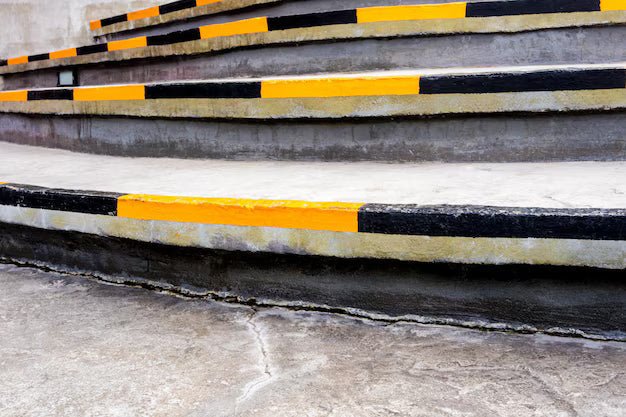Cold mornings, steady rain, and shorter days often reveal which outdoor spots turn risky first. Front steps that are fine in summer may start to hold damp. Walkways people use every day can get slick with frost or leaf build-up. Wherever feet land often, the surface changes faster as the weather shifts.
This is where anti-slip GRP decking becomes useful in helping to make high-traffic areas safer. GRP materials can handle repeated use daily without breaking down, even when the pavement never truly dries out. We’re going to focus on what counts as a high-use space, why GRP works so well, and when to act before winter locks everything in place.
What Makes a Zone High Traffic?
A high-traffic zone is any part of a property that people pass through again and again. These are spots where wear happens quicker, and slippery patches often show up during colder months. Some common examples include:
• Garden walkways leading to back doors or bins
• Front steps of shops or flats shared by tenants
• Entryways of schools where students cluster at pick-up times
• Outdoor ramps, especially where wheel users or trolleys pass regularly
High foot traffic means more pressure on the same bit of surface. On timber decking or painted wood, that can wear down the texture over time, making the boards smooth and less able to shed water. Add in standing moisture after autumn rain or morning frost, and small patches quickly become risky, especially when people are hurrying or carrying things.
The location of the zone matters too. Shaded side yards, areas with poor drainage, or spots close to trees often stay damp longer. That extra moisture soaks into wood, hastens wear, and gives slippery growth something to grip onto.
Understanding the specific challenges of each space can help determine the best prevention methods. When dampness lingers after typical rainy days, or when the morning dew simply never dries from shaded sections, it's clear that these need extra focus.
Why GRP Surfaces Make a Difference
GRP (glass reinforced plastic) doesn’t act like ordinary decking. It’s a strong, water-resistant material formed with textured finishes that keep grip underfoot, even in poor conditions. Where wood might hold water or grow slick from algae, GRP keeps its hold after repeated use.
For outdoor spaces that stay wet through colder months, regular coatings such as anti-slip paint can wear off too quickly. With anti-slip GRP decking, you're dealing with texture built right into the surface. That grit doesn’t peel, and it hasn’t got anything to wash away. It simply works.
Here’s how it holds up:
• Resistant to heavy foot traffic
• Less likely to wear down under repeated pressure
• Stays effective across frozen mornings, damp evenings, and sudden rain
That reliability matters more when weather stays unpredictable. You want something that doesn’t need fussing with each season.
Slips Away’s GRP anti-slip range includes stair tread covers, flat sheets, and stair nosings pre-drilled for easy installation and available in various colours. The surface grit is moulded through the panel, delivering durable grip even as traffic increases.
This type of surface solution stands up to repeated abrasion from shoes, wheels, and even abrasive grit tracked in from outdoors. Its durability means maintenance time is reduced, and the likelihood of sudden deterioration is lower, making it a practical choice for areas used by many people throughout the day.
Where to Use Anti-Slip GRP Decking for Best Results
Some places naturally call for stronger grip. These are the first to soak through during rain, and they tend to stay colder longer on winter mornings. Smart areas for GRP use include:
• Steps to front or rear entries
• Ramps near buildings or garden paths
• Commercial entryways where people queue or pause
• Side routes through shaded corridors
• Schoolyards at drop-off gates or near covered walkways
• Around water features or pools
Wherever water can collect or feet regularly fall, GRP decking helps bring back control. It’s most useful when placed with care. Instead of covering an entire area, think of key points like:
• The outer edge of each step, this is where people usually plant their foot
• Along the centre of a path, especially if the route narrows
• At the turning points or blind corners where slips often begin
A light-coloured strip might stand out better against dark timber, especially during low-light hours. Just a few well-placed additions can make the whole zone easier to trust across multiple seasons.
It can be useful to visually inspect outdoor routes after rainfall or in the early morning when condensation is most likely. Finding entryways or pathways where moisture lingers, or noting spots where people slow down or change direction, can highlight priority areas for new grip. These practical observations, combined with known problem zones like stairs and ramps, support a safer environment throughout the colder months.
Preparing Surfaces Before Installation
For GRP decking to stay in place and work well, the surface underneath should be sound. A bit of prep now saves extra trouble later when the cold has set in.
Here are some steps to follow before installation:
1. Clean the boards so mud, moss, and old grip finishes aren’t left underneath
2. Dry the surface where possible, laying strips on soaked wood can make sliding more likely
3. Avoid installing over boards that are cracked, soft, or coming loose from the frame below
4. Watch how water moves over the surface and clear drainage gaps if needed
It's no good placing grip over something that won’t support it. Timber that’s already breaking down may continue to shift through winter, which puts your new grip at risk.
Test with a broom or light sweep of the foot. If the board gives too much or moves too easily, that section probably needs repair first.
Good preparation means a cleaner installation and longer-lasting safety. Cleaning and drying surfaces removes unwanted debris, and checking for needed repairs ensures new panels will remain stable as the weather starts to challenge outdoor structures. Allowing time for boards to air out after rainfall can be critical. Rushing installation might seem efficient, but allowing surfaces to dry can prevent unexpected issues with adhesives or fixings later.
Autumn Timing and Winter Benefits
November is usually the last stretch of the year when outdoor jobs still feel manageable. After this point, the softness of daylight drops more sharply, and moisture sits longer each day. Getting anti-slip GRP decking sorted before the worst of winter makes everything that little bit easier.
Once frost picks up, even dry boards may get slick overnight. GRP doesn’t shift with the weather the same way bare wood does. Since the texture is part of the material itself, it continues to grip when temperatures fall.
The timing matters. Laying the grip now gives it a chance to settle in place before colder snaps arrive. Adhesives work better when they’re not battling frozen surfaces. By sorting high-use outdoor areas ahead of freezing mornings, you build in that extra bit of safety for anyone crossing outside once the winter stretch begins.
Paying attention to seasonal cycles helps set up outdoor spaces for consistent use. Doing these jobs in autumn takes advantage of the last dry weeks before wetter conditions make installations trickier. Little steps now lead to smoother routines through the coldest months and fewer worries about traction underfoot when weather is at its worst.
Make Every Step Safer this Season
High-traffic spots are often impossible to avoid, even when the weather turns. People still head out in the dark, collect parcels, take the bin out, or help children into school. Every extra bit of grip turns that daily routine into a steadier act.
Anti-slip GRP decking helps bring back confidence in the paths we take most. Instead of starting winter unsure about foot placement each frosty morning, you’ve already made sure those common routes feel firm, clear, and ready.
At Slips Away, we know how quickly outdoor areas can shift from safe to slippery once the colder months settle in. That's why we offer products that help make everyday footpaths feel more dependable when weather turns wet, dark, or icy. If you're preparing your space before winter sets in, take a closer look at how anti-slip GRP decking can hold up where it matters most. It's a simple way to reduce risk in spaces you use all the time. Give us a call and we'll help you get set up.














